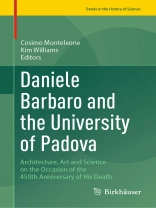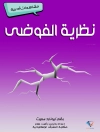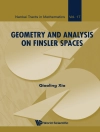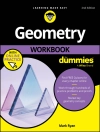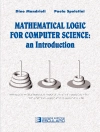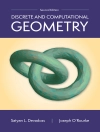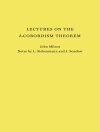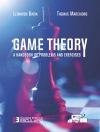This book, edited by Kim Williams and Cosimo Monteleone, follows the publication of two other books dedicated to Daniele Barbaro and published by Springer: Daniele Barbaro’s Vitruvius of 1567 (Kim Williams, 2019) and Daniele Barbaro’s Perspective of 1568 (Kim Williams and Cosimo Monteleone, 2021). Therefore, it can be considered another installment in a series that has deepened the scientific treatises published by Daniele Barbaro.
Due to the numerous scientific interests that Barbaro matured in the years he spent at the University of Padua, we have invited experts in these topics to discuss Barbaro in relation to his training. In particular, the book opens with the essays of the two editors to frame its general theme in relation to mathematics. Cosimo Monteleone addressed the relationship between Barbaro’s perspective theory with Euclid’s optics, the Aristotelian process of knowledge and the ophthalmological discoveries of the University of Padova in the Renaissance. Kim Williams underlines how Barbaro’s arithmetic and geometry established `the most certain sciences’ and set the base of the `primary sciences’. A series of essays concerning Barbaro’s training at the University of Padua complete the theoretical framework analyzed by the two editors. These studies embrace the following subjects: mathematical instruments (Filippo Camerota), astronomy and sundials (Cristiano Guarneri), mathematics, geometry and polyhedral (Vera Viana), perspective and anamorphosis (Agostino De Rosa), botany and the foundation of the botanical garden (Stefano Zaggia), Vitruvius’ architecture (Ekaterina Igoshina, Ilya Anikyev, Anna Markova) and Aristotelianism (Branko Mitrović). A foreword by Xavier Salomon sets the stage for this book, outlining the innovations that Barbaro brought to scientific knowledge.
Barbaro’s scientific efforts are sometimes dismissed in recent studies as a compilation of known principles. The aim of this present book is to reveal the truly innovative nature of Barbaro’s experiments and results and restore him to his rightful place as an original scholar of Renaissance.
Daftar Isi
FRONT MATTER.- Xavier Salomon, Foreword.- Cosimo Monteleone and Kim Williams, Note of Editors.- CONTENTS.- Cosimo Monteleone, Daniele Barbaro and the ‘Philosophy’ of Perspective.- Kim Williams, Daniele Barbaro and the Science of Mathematics.- Filippo Camerota, Daniele Barbaro and Mathematical Instruments.- Stefano Zaggia, Daniele Barbaro and the Foundation of the Botanical Garden at the University of Padova.- Cristiano Guarnieri, Daniele Barbaro’s Investigations on Timekeeping and the Villa in Maser.- Vera Viana, Daniele Barbaro’s Non Uniform Polyhedra.- Agostino De Rosa, Perspettiva ridotta a perfezione: glimpses on Daniele Barbaro’s perspective theory.- Ekaterina Igoshina, Ilya Anikyev, Anna Markova, Marginal Notes by Daniele Barbaro in the 1511 Edition of Vitruvius from the Pushkin State Museum of Fine Arts Collection: Attribution Process and Dating Method.- Branko Mitrović, Paduan Aristotelianism and Daniele Barbaro’s Commentary on Vitruvius.
Tentang Penulis
Cosimo Monteleone is Associate Professor of Descriptive Geometry and Architectural Representation at the Università degli Studi di Padova. In 2003 he obtained his degree in Architecture at the University IUAV of Venice, where he also earned his Ph.D. in 2010 in “Architectural Composition curriculum in Survey and Representation of Architecture and Landscape” with a thesis on the Guggenheim Museum by Frank Lloyd Wright. His research focuses on architectural, urban and landscape survey; 3D modelling of architecture and urbanism; augmented and virtual reality; gnomonics; science and technique applied to art and architecture; history of representation, with a particular focus on Renaissance perspective. He is member of “Visualizing Cities”, an international research project devoted to the analysis and the representation of the historical, urban and architectural transformations. He is member of the National Technical UNI – UNI / CT 047 / GL 03 (Technical drawing for building and installations). On the topics of his research he has published several essays, presented at conferences, given lectures, and directed digital installations for national and international exhibitions. Among his publications is Frank Lloyd Wright. Geometria e Astrazione nel Guggenheim Museum (Rome: Aracne 2013). He is a member of the Editorial Board of the Nexus Network Journal, in which he has published two papers : “Perspective at Palladio’s Time and Its Scientific Heritage” (with Andrea Giordano) and “The Perspective of Daniele Barbaro” (2019). His latest books are La prospettiva di Daniele Barbaro. Note critiche e trascrizione del manoscritto It. IV, 39=5446 (Aracne, 2020) and Daniele Barbaro’s Perspective of 1568 (Springer, 2021).
Kim Williams is a writer and editor living and working in Italy. She received her degree in Architectural Studies from the University of Texas in Austin, and is licensed as an architect in New York State. Her apprenticeship was done in the officesof Philip Johnson in New York. She became interested in mathematics and architecture while writing Italian Pavements: Patterns in Space (Houston: Anchorage Press, 1997) about the role of decorated pavements in the history of Italian architecture. In 1996 she began the international conference series “Nexus: Architecture and Mathematics”, the fourteenth edition of which will take place in Torino, Italy, in June 2023. In 1999 she founded the Nexus Network Journal to provide a dedicated venue for scholarly research in architecture and mathematics. In 2000 she founded Kim Williams Books, an independent press. Kim has published many articles in scholarly journals on the use of mathematical principles in architecture, including The Mathematical Intelligencer and Leonardo. Her drawings have been displayed in both group and solo exhibits. She has participated in numerous international conferences. She co-edited, with Michael Ostwald, the 2-volume Architecture and Mathematics from Antiquity tothe Future (Birkhäuser, 2015). She is editor for Springer of the book series ‘Mathematics and the Built Environment’. Her latest books are Daniele Barbaro’s Vitruvius of 1567 (Springer, 2019) and Daniele Barbaro’s Perspective of 1568 (Springer, 2021).
